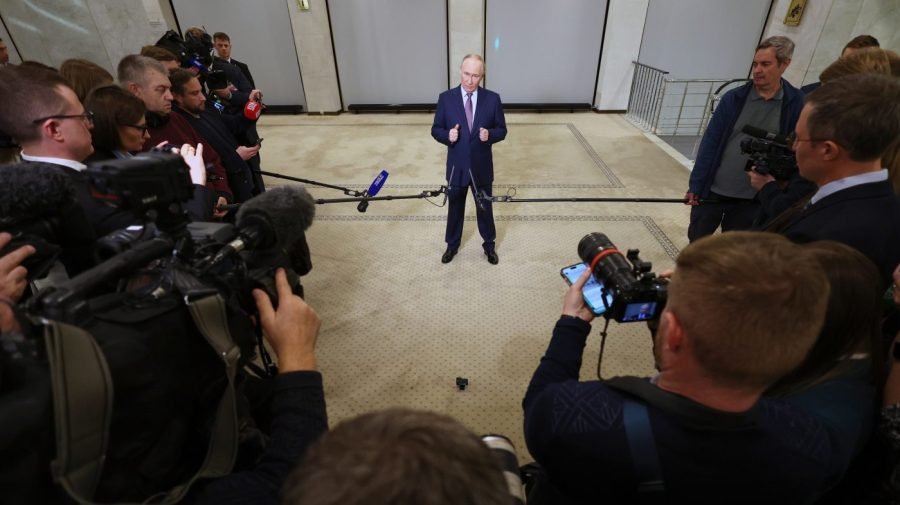Russia’s claimed successful test of a new nuclear capable cruise missile last week has drawn international concern and condemnation from President Trump on Monday.
The weapon, tested last week, with the results announced by Moscow on Sunday, purportedly flew 8,700 miles, according to a video released by the Kremlin. That would mean the missile, known as the Burevestnik, is capable of dropping atomic bombs anywhere in the world.
In the video, a camouflage-clad Russian President Vladimir Putin said the weapon was “indeed a unique weapon that no other country possesses.”
What’s more, Russia has claimed the missile can’t be stopped by current air defenses
But Trump criticized the test, telling reporters it was “inappropriate” to be holding such displays when he’s been trying to get Moscow to come to the table and negotiate an end to its war in Ukraine.
“You’ve got to get the war ended. A war that should have taken one week is now in its soon fourth year,” Trump said while traveling from Kuala Lumpur to Tokyo. “That’s what you ought to do, instead of testing missiles.”
He added: “We test missiles all the time. They’re not playing games with us, and we’re not playing games with them either.”
Little is known about the Burevestnik, a nuclear-powered missile named after a type of sea bird known in English as a storm petrel but code-named “Skyfall” by NATO.
In the video released by Russia, Chief of General Staff Gen. Valery Gerasimov tells Putin that the Burevestnik spent 15 hours in the air and “that’s not the limit.”
Norway said Monday that the test took place on an archipelago in the Barents Sea.
“We can confirm that Russia has conducted a new test launch of the long-range cruise missile Skyfall (Burevestnik) on Novaya Zemlya,” Vice Adm. Nils Andreas Stensoenes, head of Norway’s Intelligence Service, told Reuters in a statement.
Putin first said that Moscow was working on the weapon in March 2018, claiming then that it would have an unlimited range and would be undetectable.
But the West has criticized it as a waste of money by the Kremlin and potentially a major environmental risk due to a nuclear mini-reactor that powers the engine that could be greatly unreliable. Observers describe the development of the missile as largely political.
Russia also would be the first country to have a missile powered in such a manner – essentially a miniature nuclear power plant heating air to power the engine. The U.S. and the then-Soviet Union tried to develop the technology during the Cold War but the two both abandoned their efforts due to concerns experts point to today.
The U.S. government suspects it was a failed Burevestnik test in 2019 that caused an offshore explosion in the Russian Arctic that killed five scientists and caused radiation to spike nearby.
